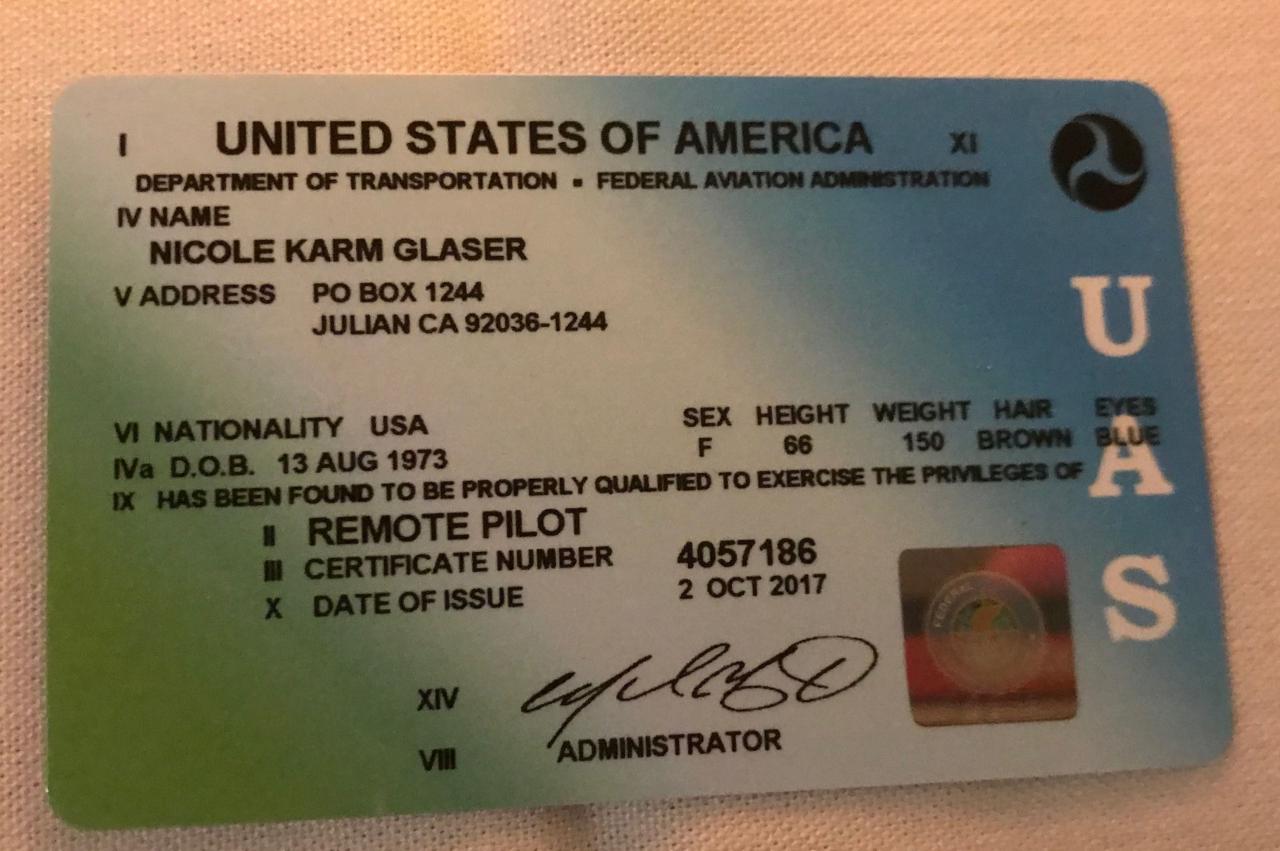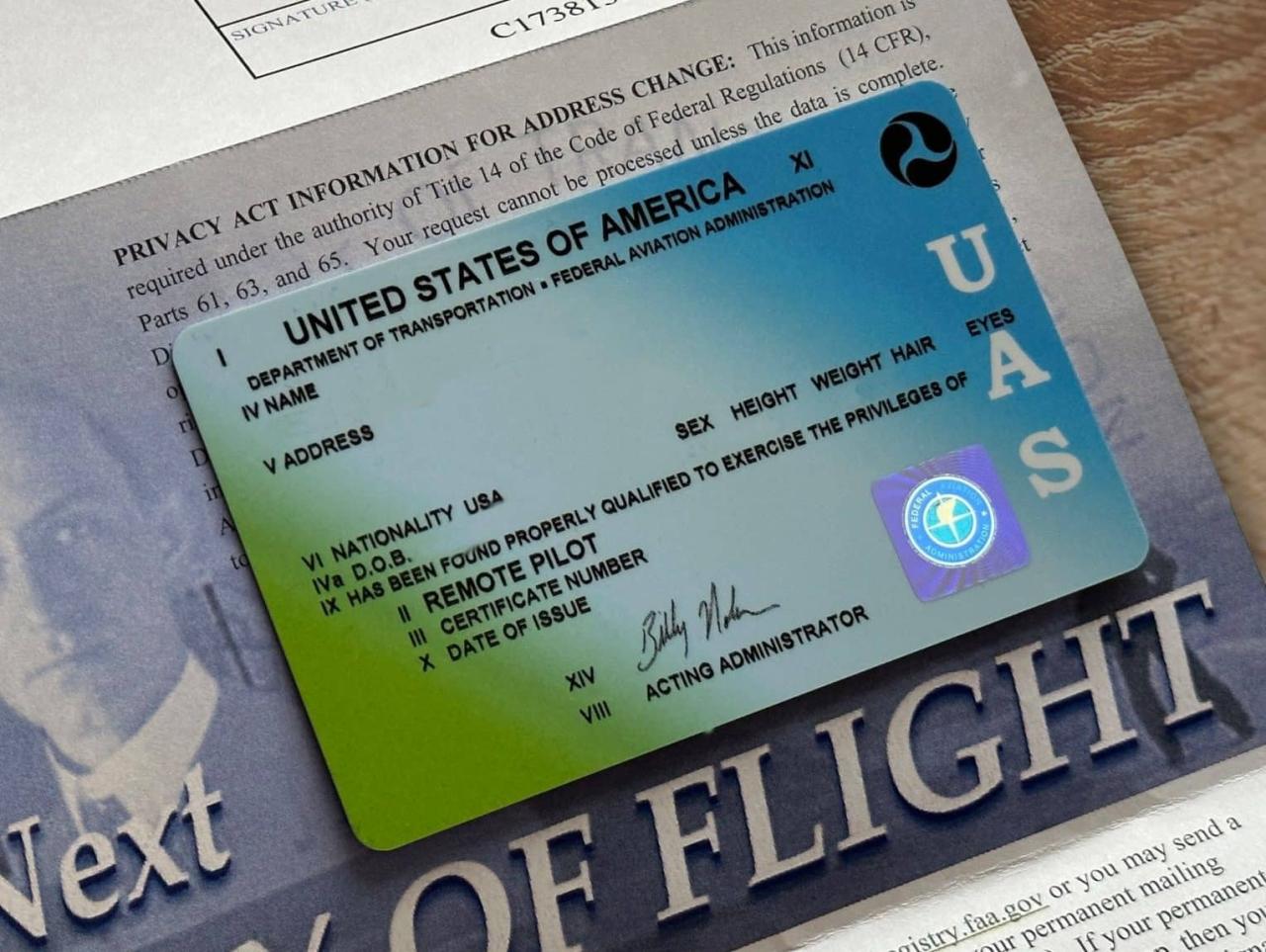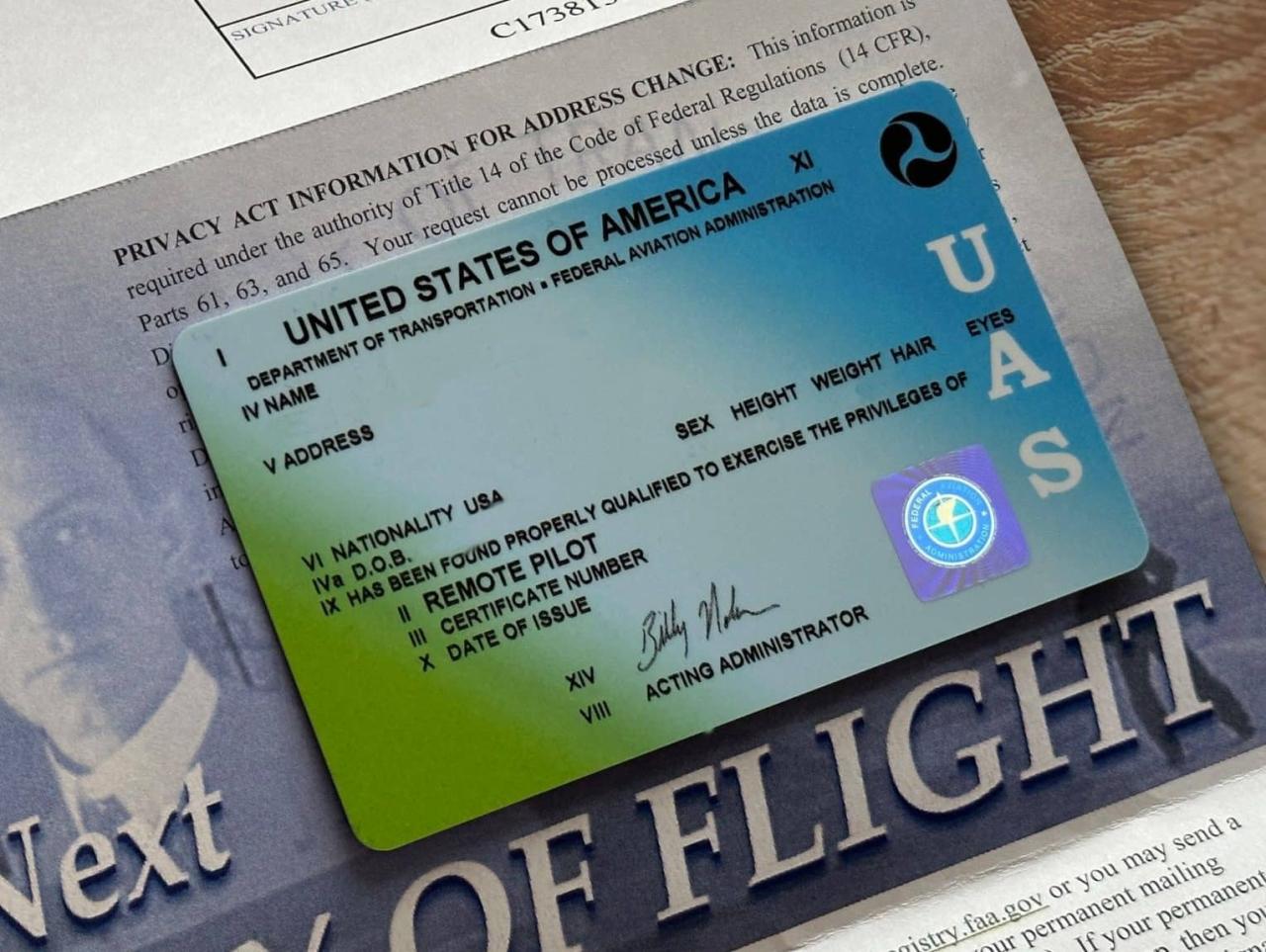Drone Pilot License Canada: Want to fly drones professionally in Canada? This guide breaks down everything you need to know, from licensing requirements and regulations to career opportunities and essential training. We’ll cover the different license classes, the application process, safety procedures, and even explore the exciting career paths open to licensed drone pilots. Get ready to take flight!
Navigating the world of drone piloting in Canada can feel overwhelming, but with the right information, it’s an achievable goal. This guide provides a clear and concise pathway to understanding the regulations, acquiring the necessary skills, and ultimately, securing your drone pilot license. We’ll delve into the specifics of each license class, compare training options, and highlight the crucial safety aspects to ensure responsible and legal drone operation.
Thinking about getting your drone pilot license in Canada? It’s a great way to open up exciting opportunities. You might even want to investigate solving the mystery behind that strange mystery drone spotted near the lake last week! Understanding regulations is key, so make sure you thoroughly research the licensing process before you take to the skies.
A license ensures you’re flying legally and safely.
Canadian Drone Pilot Licensing: A Comprehensive Guide
So you’re thinking about becoming a drone pilot in Canada? That’s fantastic! This guide will walk you through everything you need to know about obtaining a drone pilot license, navigating regulations, finding training, and exploring career opportunities in this exciting field.
Licensing Requirements in Canada
Canada’s drone regulations are managed by Transport Canada. The licensing system is designed to ensure safe and responsible drone operation. Different license classes cater to various operational needs and skill levels.
Drone Pilot License Classes in Canada
The specific classes and requirements can change, so always check Transport Canada’s official website for the most up-to-date information. Generally, you’ll find categories based on the weight of your drone and the complexity of the operation. This might include Basic, Advanced, or even specialized licenses for commercial use. Each class involves different knowledge and skill tests, focusing on safe operation, airspace awareness, and regulatory compliance.
The Application Process for a Drone Pilot License
Applying for a drone pilot license typically involves completing an online application, providing necessary documentation (like identification and proof of training), and paying the applicable fees. Transport Canada will review your application and, if approved, issue your license. Remember to keep your license information up-to-date.
Renewing Your Drone Pilot License
License renewal procedures vary depending on the license class and may involve demonstrating continued competency through further training or testing. Transport Canada will notify you well in advance of your renewal date, outlining the required steps.
Comparison of Drone Pilot License Classes
The table below provides a general overview of different license classes (the specifics are subject to change, so consult Transport Canada). Note that this is a simplified representation for illustrative purposes only.
| License Class | Maximum Drone Weight | Operational Limitations | Knowledge/Skills Tests |
|---|---|---|---|
| Basic | Under 25 kg | Visual Line of Sight (VLOS) only, limited airspace access | Basic knowledge of regulations, safe operation procedures |
| Advanced | Under 25 kg | Beyond Visual Line of Sight (BVLOS) in certain circumstances, more complex airspace access | Advanced knowledge of regulations, airspace management, risk assessment |
| Commercial | Varies | Subject to specific operational approvals, stringent safety requirements | Comprehensive knowledge of regulations, safety procedures, and commercial operations |
| Specialized | Varies | Specific operational requirements (e.g., night flights, beyond visual line of sight) | Specialized knowledge and skills tests related to specific operational requirements |
Drone Regulations and Safety: Drone Pilot License Canada
Safe and responsible drone operation is paramount. Understanding and adhering to Canadian drone regulations is not just a matter of compliance; it’s about protecting yourself, others, and the environment.
Key Regulations Governing Drone Operation, Drone pilot license canada
Canadian drone regulations cover various aspects, including registration, licensing, operational limitations (such as flight altitudes and distances from airports), and airspace restrictions. Always check the official Transport Canada website for the most current regulations.
Maintaining Situational Awareness
Situational awareness is crucial for safe drone flights. This means being constantly aware of your surroundings – other aircraft, people, obstacles, and weather conditions. Never fly distracted.
Thinking about getting your drone pilot license in Canada? It’s a great field, but you’ll need to understand the regulations. One thing to consider is the airspace classifications, which can be tricky; to help you understand some of the terminology, check out this resource on finding an 8 letter word starting with ai which relates to aviation.
Once you’ve grasped the basics, you’ll be well on your way to safely and legally flying your drone in Canada.
Safe Drone Operation Near Airports and Restricted Airspace
Operating drones near airports or other restricted airspace is strictly regulated. You need specific authorization and knowledge of air traffic control procedures. Failing to comply can lead to serious consequences.
Privacy and Data Protection
Drone pilots have a legal responsibility to respect privacy laws. Unauthorized recording or capturing of images or data is illegal. Always be mindful of where you fly and what you capture.
Common Drone-Related Accidents and Preventative Measures
Common accidents involve loss of control due to technical malfunctions, collisions with obstacles, or violations of airspace regulations. Regular maintenance, pre-flight checks, and adhering to regulations are key preventative measures.
Training and Resources for Drone Pilots

Proper training is essential for safe and competent drone operation. Several organizations offer high-quality training programs to prepare you for the licensing exams and responsible drone piloting.
Reputable Drone Pilot Training Organizations
Numerous colleges, flight schools, and private training providers offer drone pilot training across Canada. Look for organizations with experienced instructors and comprehensive curricula aligned with Transport Canada regulations.
Training Methods: Online, In-Person, and Simulators
Training methods include online courses, in-person workshops, and simulator training. Online courses offer flexibility, while in-person workshops provide hands-on experience. Simulators help develop piloting skills in a safe environment.
Benefits of Certification from a Recognized Provider
Certification from a recognized training provider demonstrates your competency and professionalism. It can enhance your job prospects and build credibility with potential clients.
Essential Resources for Drone Pilots

Several online resources, publications, and online communities support aspiring and current drone pilots. Transport Canada’s website is a primary source of information on regulations and licensing.
Recommended Study Materials for the Drone Pilot License Exam
- Transport Canada’s official publications and guidelines
- Textbooks and study guides specifically designed for the Canadian drone pilot license exam
- Online resources and practice exams
- Materials provided by your chosen training provider
Career Opportunities for Drone Pilots
The demand for skilled drone pilots is growing rapidly across various sectors. Licensed drone pilots can find diverse and rewarding career paths.
Career Paths for Licensed Drone Pilots
Opportunities exist in agriculture (crop monitoring, spraying), construction (site surveys, progress monitoring), filmmaking (aerial cinematography), infrastructure inspection, search and rescue, and many other fields.
Demand for Drone Pilots Across Industries
The demand varies by region and industry. Areas with significant agricultural or construction activity often have higher demand. The filmmaking industry also offers substantial opportunities.
Salary Expectations and Job Outlook
Salary expectations depend on experience, location, and industry. Generally, experienced pilots with specialized skills command higher salaries. The job outlook is positive, with projected growth in the drone industry.
Successful Drone Pilot Businesses in Canada
Many successful businesses utilize drones for various services. Examples include companies specializing in aerial photography, agricultural surveying, and infrastructure inspection.
Sample Resume for a Licensed Drone Pilot
A resume should highlight relevant skills and experience, including licensing information, training certifications, operational experience, and proficiency with different drone models and software.
Drone Technology and Equipment

Understanding drone technology and equipment is crucial for safe and effective operation. The market offers a variety of drones, each with its own capabilities and specifications.
Types of Drones and Their Capabilities
Drones range from small, lightweight models suitable for recreational use to larger, more sophisticated models for professional applications. Features include camera quality, flight time, range, and payload capacity.
Selecting a Drone for Professional Use
When choosing a drone for professional use, consider factors such as payload capacity, flight time, camera resolution, sensor capabilities, and software compatibility.
Drone Maintenance for Optimal Performance
Regular maintenance is vital for ensuring optimal drone performance and longevity. This includes cleaning, inspecting components, and replacing worn-out parts.
Thinking about getting your drone pilot license in Canada? It’s a great way to open up exciting opportunities. Before you dive in, though, check out the awesome deals at this year’s drone Boxing Day sale – you might find some gear that’ll help you get started. Once you’ve got your equipment sorted, you can focus on mastering the skills needed for your license.
Getting licensed opens up a whole new world of possibilities!
Importance of Safety Equipment
Using appropriate safety equipment, such as protective gear (helmets, goggles) and emergency communication devices, is crucial for minimizing risks.
Drone Batteries: Safe Handling and Storage
Proper handling and storage of drone batteries are essential to prevent accidents. Follow the manufacturer’s instructions regarding charging, discharging, and storage.
Last Point

Securing your Drone Pilot License in Canada opens doors to a dynamic and growing industry. By understanding the regulations, completing the necessary training, and prioritizing safety, you can confidently pursue a rewarding career as a drone pilot. Remember to stay updated on evolving regulations and continue learning to enhance your skills and knowledge. Safe flying!
Frequently Asked Questions
What are the age requirements for a drone pilot license in Canada?
There’s no minimum age, but you must be able to understand and comply with the regulations.
How long does it take to get a drone pilot license?
The time varies depending on your learning pace and the training method chosen. Expect several weeks to a few months.
Can I fly my drone recreationally without a license?
Yes, but there are still regulations to follow regarding airspace and safety. Check Transport Canada’s website for details.
How much does a drone pilot license cost?
The cost varies depending on the training and exam fees. Budget for a few hundred dollars.
